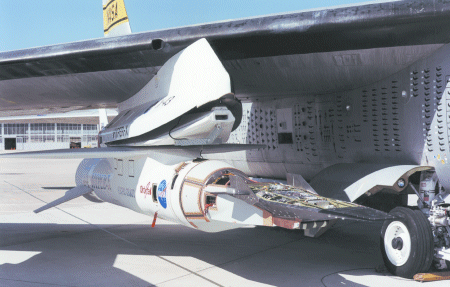NASA plans a captive-carry test of its X-43A hypersonic experimental vehicle on 28 April, leading to a Mach 7 test flight on 19 May. The supersonic-combustion ramjet (scramjet)-powered unmanned vehicle, attached to its Orbital Sciences Pegasus booster, will be carried aloft under the wing of NASA's Boeing B-52.

If successful, the X-43 will become the fastest air-breathing vehicle ever, beating the Lockheed SR-71, which flew at just over Mach 3. NASA's rocket-powered X-15 reached a speed of Mach 6.7.
The B-52 will release the X-43 and its booster over the Pacific at 24,000ft (7,300m) and M0.5. The rocket will climb to 100,000ft and M7 before releasing the X-43. The hydrogen-powered scramjet will burn for 5-7s, after which the vehicle will dive into the ocean.
The test will be the first free flight of an airframe-integrated scramjet and will provide data on supersonic combustion and aerodynamic performance. A second test at M7 is planned for year-end, leading to a flight at M10 in October next year.
Source: Flight International























